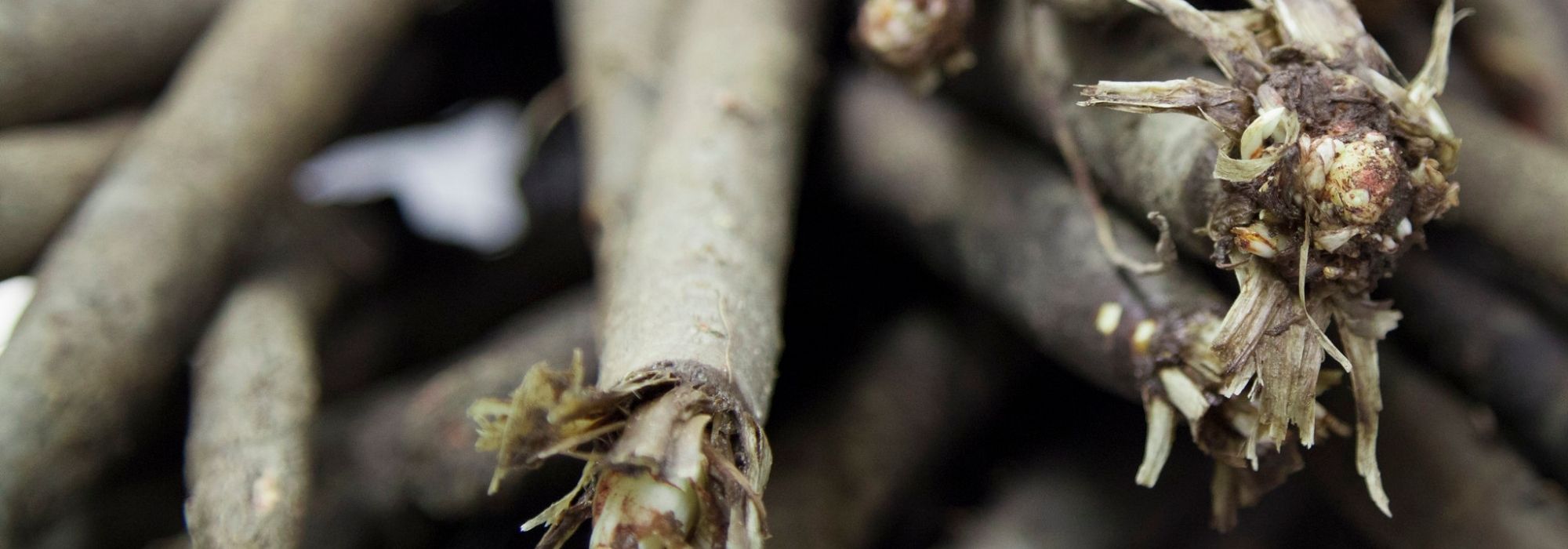
Scorzonera: sow, maintain and harvest
Contents
Scorzonera in a nutshell
- Often confused with salsify, black salsify (Scorzonera hispanica) produces edible roots with black skin and very fine white flesh
- Belonging to the Asteraceae family, black salsify is a perennial vegetable plant cultivated as an annual or biennial
- It produces fairly broad rosette leaves and light yellow flowers resembling those of dandelions
- Black salsify thrives in rich, sandy, cool, and deep soil and prefers a sunny location
- Its roots can be eaten raw grated or cooked as a side dish with meat or fish, or prepared as purée, gratin, stir-fry, or soup
A word from our expert
The black salsify (Scorzonera hispanica) belongs to the category of old vegetables that have somewhat fallen into oblivion, as they are rarely found on the stalls of markets and supermarkets. And while it sometimes makes an appearance among other root vegetables, it is often referred to as “black salsify.” This can create confusion and mislead consumers. Let’s be clear, black salsify is not a salsify! Even though their appearance is similar. However, black salsify produces roots with a black epidermis and white flesh, while salsify has a yellowish-white skin.
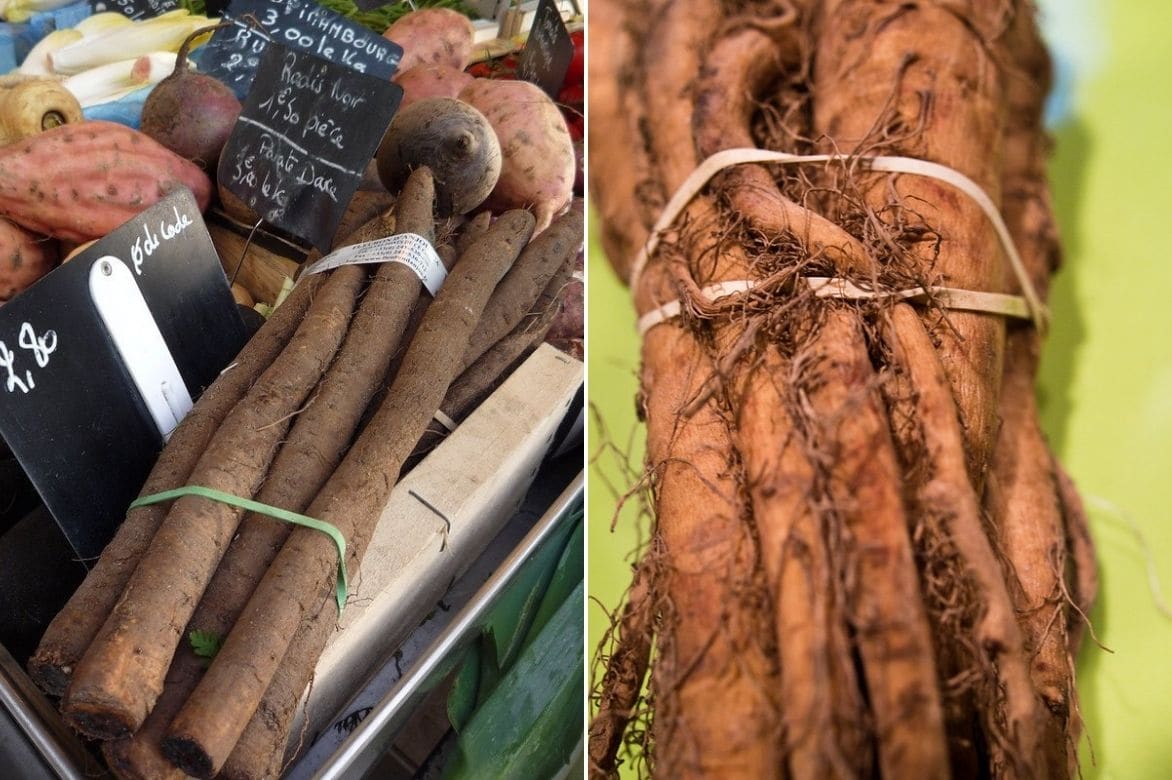
The roots of black salsify are black, while those of salsify are yellowish-white
As for the gardener, they will be able to tell the difference thanks to the foliage, which is slightly different, and the flowering, which is yellow in black salsify, pink or blue in salsify.
Another significant difference is that black salsify is a perennial vegetable plant, grown as an annual or biennial, but it can remain in the ground for 3 years. In contrast, salsify is a biennial plant.
In terms of cooking, they are consumed in much the same way. Both of these root vegetables have a mild, subtle flavour reminiscent of asparagus or artichoke. In short, due to its taste and ease of cultivation, black salsify is a vegetable that urgently needs to be (re)discovered.
Description and Botany
Botanical data
- Latin name Scorzonera hispanica
- Family Asteraceae
- Common name Spanish scorzonera, Spanish salsify, black salsify, black bark, cressonère, corsionère, corsonèle, écorsnère.
- Flowering summer
- Height 30 to 60 cm
- Exposure sunny or semi-shade
- Soil type rich, cool, sandy and deep
- Hardiness -25 °C
The scorzonera belongs to the very large family of Asteraceae which includes many prominent genera such as aster, ragweed, yarrow, dahlia, zinnia, gazania… but also plants that end up on our plates like scorzonera and salsify, or even endive, artichoke, Jerusalem artichoke or tarragon.
If we focus on the genus scorzonera (Scorzonera), one discovers different varieties such as ribbed scorzonera, small scorzonera, trap-leaved scorzonera or even Scorzonera austriaca, herbaceous perennial plants with different growing areas. But the one that interests us because it could find its place in our vegetable garden, is Scorzonera hispanica, also known as scorzonera, black salsify or Spanish scorzonera. Terms that only sow confusion in the mind of a curious gardener. First, because scorzonera is not a salsify. Admittedly, the two root vegetables are cousins but they differ in appearance: the scorzonera produces a root nearly 30 cm long with a hard black skin while the salsify has a shorter yellow-white root.
Furthermore, contrary to what its Latin name suggests, scorzonera is not originally from Spain. It would rather draw its origins from the Caucasus. Nevertheless, it was widely consumed in antiquity, primarily for its qualities as a medicinal plant. The Greeks and Romans harvested it in the wild and mainly consumed its leaves, which they praised for their virtues on intestinal transit, heart problems, to treat the plague and even to eliminate snake venom. It was not until the 15th and 16th centuries that it was cultivated as a vegetable plant, dethroning salsify due to its sweeter and milder flavour and less fibrous texture. At that time, in botanical manuals, scorzonera and salsify were still confused under the term “trapogodon”.
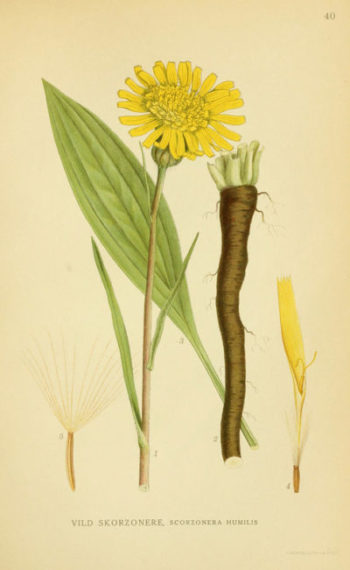 Botanical plate
Botanical plate
In 1749, in the School of the Kitchen Garden, the author mentions scorzonera as “the food in lean times from All Saints’ Day to Easter” and describes its cordial and diaphoretic medicinal virtues. It is consumed as a herbal tea against smallpox and is included in the composition of distilled waters for chest ailments.
Later, the gardener of Versailles, Jean-Baptiste de la Quintinie, praised its merits! Today, it is a vegetable that is rarely found in shops or markets. And, if we are lucky enough to discover it, it is often under the name of salsify. So let’s rehabilitate scorzonera!
Scorzonera hispanica is therefore a herbaceous perennial plant cultivated as a vegetable plant annually. Its cauline leaves are lanceolate, oblong and stiff, upright, starting from the collar. They are wider than those of salsify. The stem is branched except at the base, glabrous or slightly cottony.
From June to September, the plant produces bright yellow flowers, longer than the involucre, which closely resemble those of dandelion. Its flowers produce black achenes topped with small hairs.
The scorzonera produces roots with black skin and white flesh, taprooted and devoid of root hairs at the collar or rootlets (unlike salsify). They are cylindrical, elongated and thin. They can reach 30 cm. These roots are harvested the year following sowing, but they will be larger and fleshier, without being fibrous or hard, in the second year. Moreover, scorzonera can remain in the ground for 3 to 4 years, a time during which it grows.
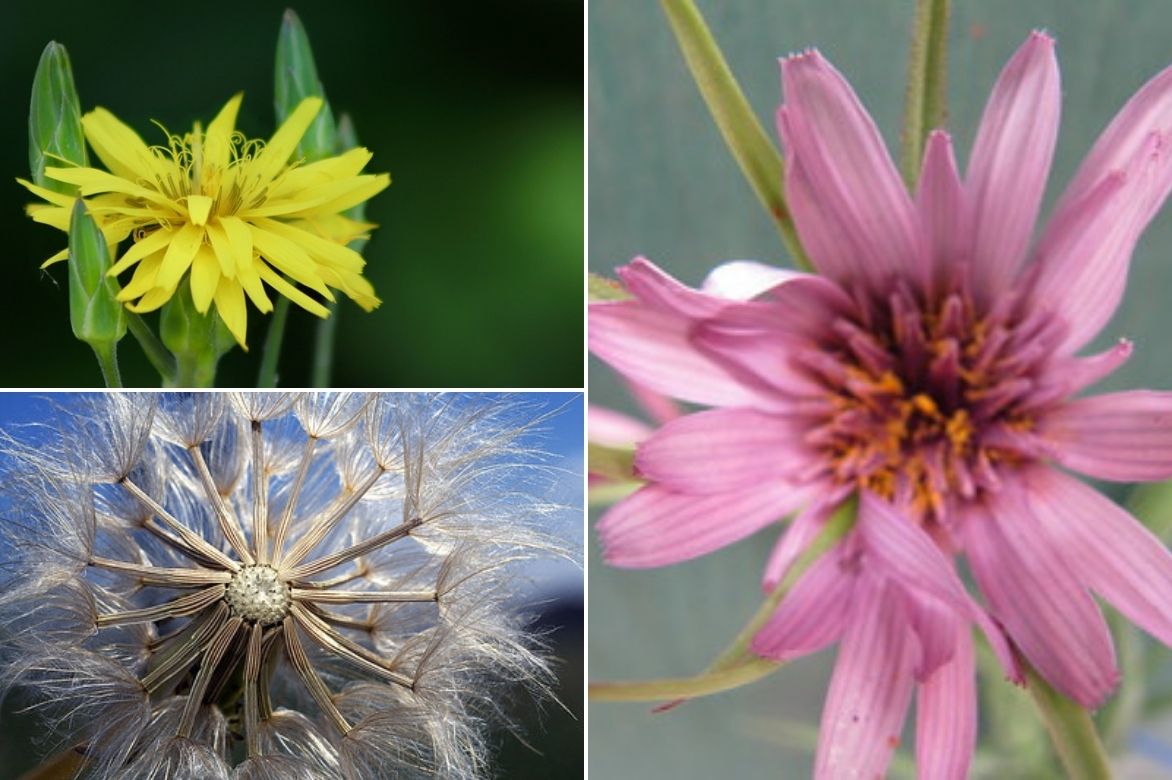 On the left, scorzonera flowers and on the right, salsify flower
On the left, scorzonera flowers and on the right, salsify flower
The different varieties of salsify
There are few varieties of scorsonère. However, the most common variety is the ‘Giant Black Russian’ with long, regular roots and excellent flavour. ‘Hoofmanns Schwarze’ offers thick, cylindrical roots with firm, tender flesh and fine brown-black epidermis. ‘Pilots’ has very long roots with very black skin.
Our Favourite Variety
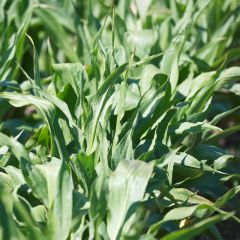
Organic Russian Giant Black Scorzonera - Ferme de Sainte Marthe seeds
- Height at maturity 50 cm
Discover other Black Salsify
View all →Available in 1 sizes
Available in 1 sizes
Available in 1 sizes
Planting salsify
Where to sow?
Scorzonera prefers a rather sunny and warm exposure, although it can grow in partial shade. In terms of soil, it prefers sandy, cool, well-loosened, and deep soils due to its taproots. It should especially be enriched with organic matter, first in autumn with compost or well-decomposed manure, at a rate of 4 kg/m², and then as spring returns, with a quick boost.
Scorzonera dislikes stony soils. If your soil is too heavy, it needs to be loosened by adding sand.
When to sow?
Sowing of scorzonera takes place in March-April.
How to sow?
Scorzonera is sown in rows spaced 20 to 25 cm apart.
- Before sowing, rake the soil to loosen it well and remove any remaining stones
- Trace furrows 2 cm deep
- Sow the seeds and cover with 2 cm of soil
- Lightly firm with the back of the rake and water
Watering should be regular to maintain soil moisture and facilitate seed germination.
When the leaves have 4 to 5 leaves, it is time to thin out to leave one young plant every 8 to 10 cm.
How to associate black salsify in the vegetable garden?
In the vegetable garden, scorzonera enjoys the company of other root vegetables like carrot, parsnip, or swede. It also pairs very well with its cousin salsify. Vegetables from the Allium family, such as leek, onion, garlic, or shallot can be planted alongside it, just like lettuce.
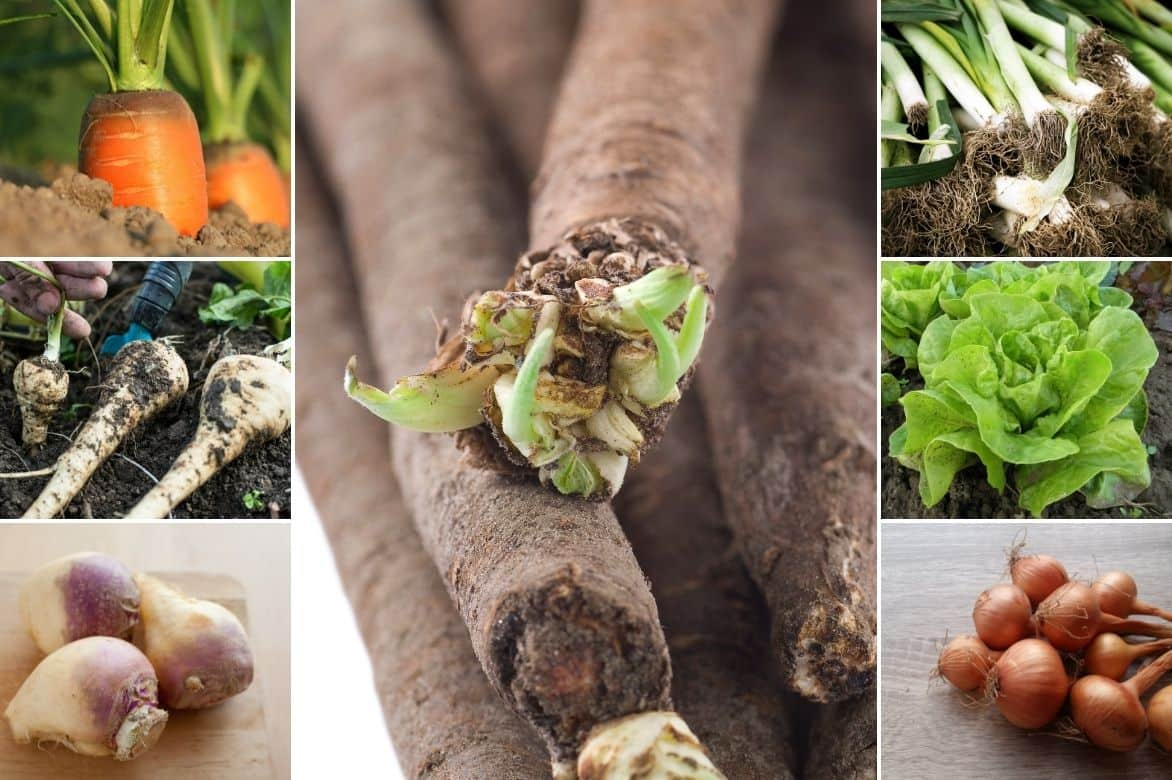
In the vegetable garden, scorzonera coexists easily with carrot, parsnip, swede, leek, lettuce, and onion
On the other hand, scorzonera does not make good neighbours with chicory, Jerusalem artichoke, and artichoke.
The care and diseases of black salsify
The scorzonera is low-maintenance. It requires just hoe and weed fairly regularly in summer to take advantage of watering, which only occurs during heatwaves or drought. Otherwise, a mulch is enough to keep the moisture.
Between June and September, the flower stems stand upright and the plant grows, especially if it is thirsty. To obtain beautiful, firm, and long roots, it is essential to cut these flower spikes as soon as they appear.
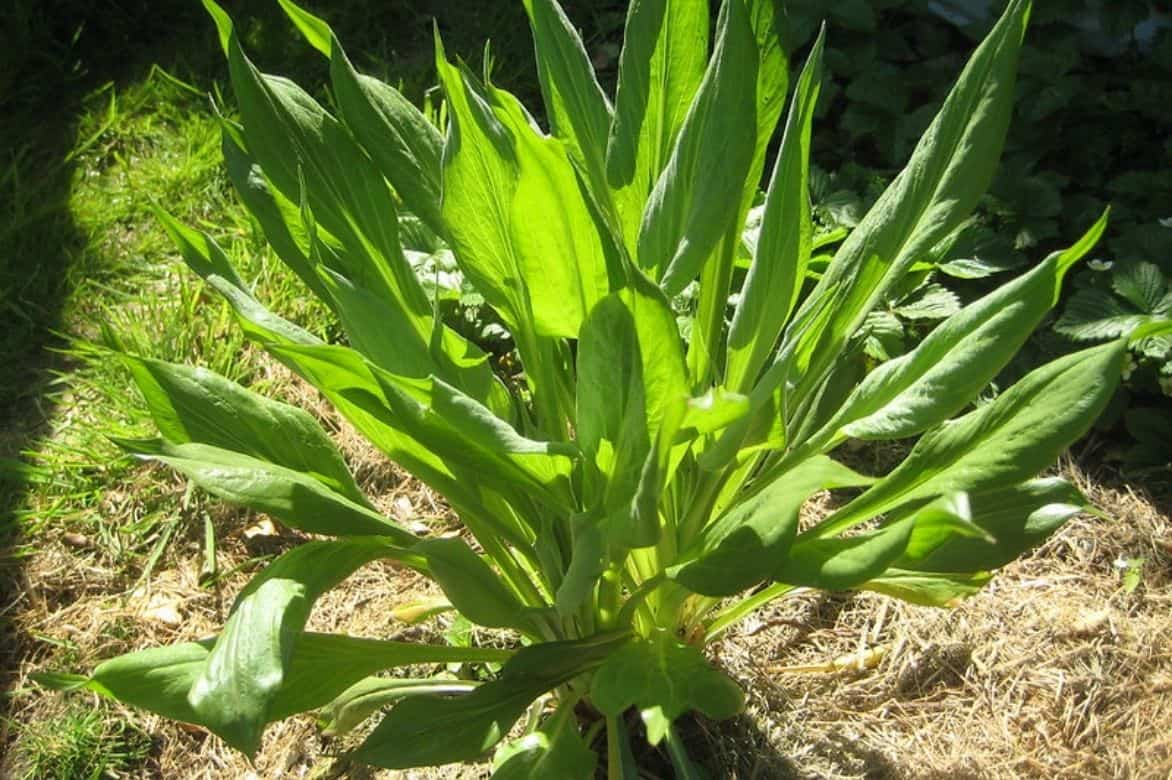
Scorzonera plants can remain in the ground for 3 years, or even 4 years. This allows for a harvest spread from October to the following spring. However, to facilitate winter harvesting, it is preferable to cover the scorzonera with a thick mulch, which will also help protect them from cold and frost. Even though the scorzonera is very hardy.
Not very susceptible to diseases, the scorzonera can still be affected by white rust. This disease primarily affects plants in the Asteraceae and Brassicaceae families. It is recognised by the smooth, round white to cream pustules that appear on the underside of the leaves. The leaves can eventually dry out. By avoiding watering the foliage and spraying with nettle or horsetail manure, one can quickly get rid of this fungal disease.
The other rust is also treated with nettle manure. As for aphid attacks, you can counter them by keeping the soil moist and reinforcing the summer mulch.
Harvesting and Storing Black Salsify
Harvesting takes place from October until the following spring, as needed. However, it is possible to extend the harvest beyond the first year and keep scorzonera plants for the following year, ensuring to cut the flower stems as soon as they appear. Scorzonera continues to grow without hardening and can be harvested in the following autumn and winter.
To harvest scorzonera, some precautions must be taken to avoid breaking them. It is essential to use a forked spade to unearth the roots. To make your work easier, cover the scorzonera with a thick layer of straw in winter to prevent the soil from freezing as much.
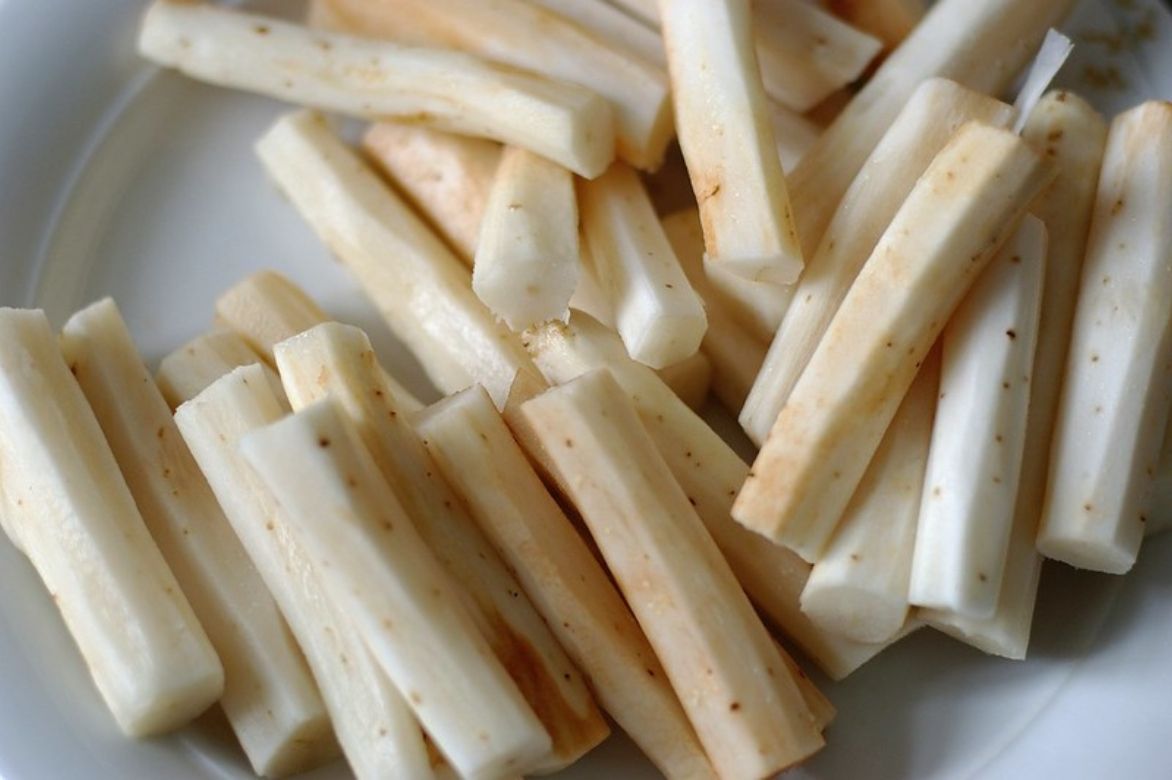
Once harvested, scorzonera can only be stored for 2 to 3 days in the refrigerator, wrapped in absorbent paper.
Garden salsify from garden to plate
Renowned for being very high in fibre, as well as vitamins E, B, and C, potassium, iron, and calcium, scorzonera also contains inulin (like artichoke, Jerusalem artichoke, or asparagus), a fibre made up of glucose and fructose, which may help regulate blood sugar levels.
On the plate, scorzonera is appreciated for its white flesh, with a fine and subtle flavour. It can be enjoyed raw, grated in salads, or cooked in various ways. Scorzonera can be boiled or steamed, cut into pieces, fried or made into fritters, sautéed in a pan or wok, prepared as purée, in gratin, or in soup… It complements all meats or fish and can be included in a stew.
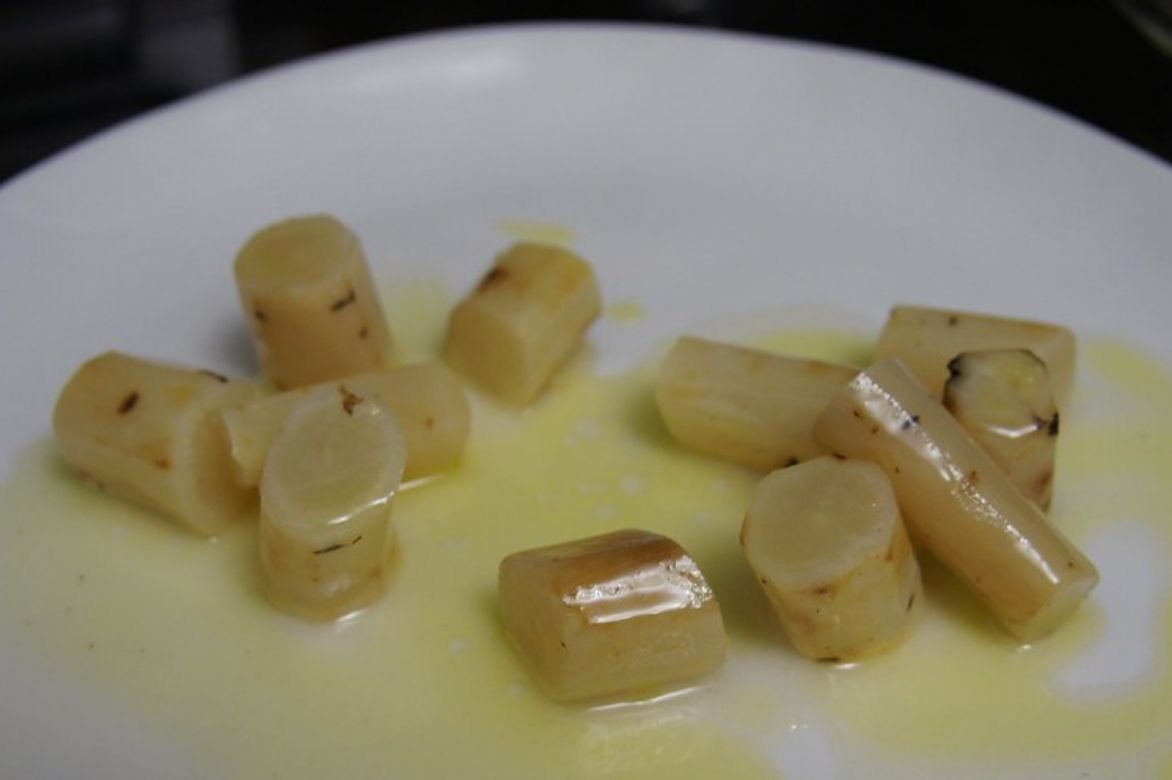
Scorzonera has a sweet and subtle flavour
However, peeling can be somewhat tricky. Scorzonera tends to blacken fingers and leave a sticky substance. Gloves are essential. Also, as soon as the scorzonera has been peeled, place it in lemon or vinegar water as it darkens very quickly.
To go further
And what if you (re)discovered all these old, forgotten vegetables that are making a comeback on the tables of top chefs? From helianthi to cardoon, from tuberous chervil to goosefoot, they add a touch of whimsy to our plates.
Also read our article Discover scorsonera, a vegetable to grow in the garden
- Subscribe!
- Contents































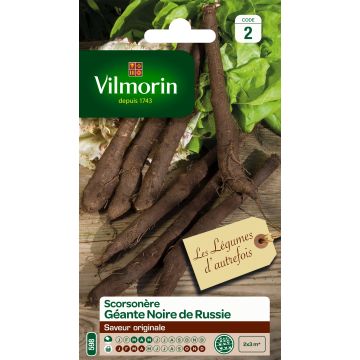


Comments